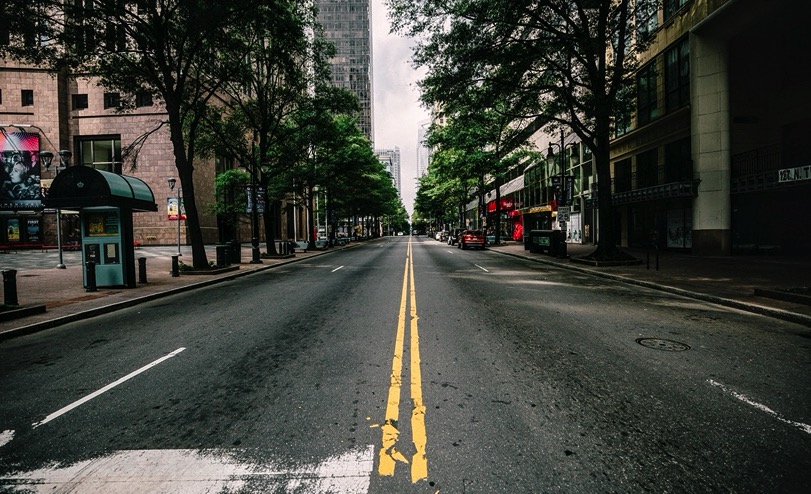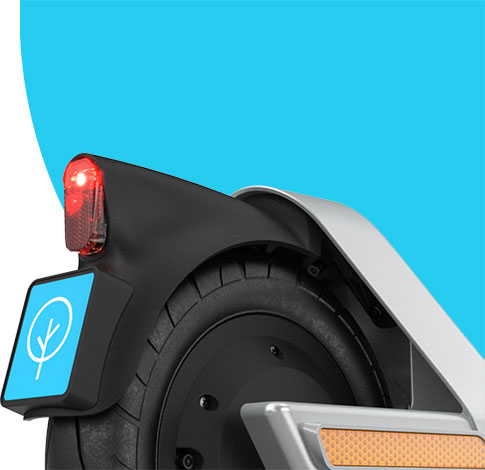The global impact of COVID-19 has been devastating. As governments around the world take drastic measures to stop its advance, however, a small but important silver lining has emerged, answering—at least temporarily—a question that countries like the Netherlands began asking almost half a century ago:
What do cities look like without cars?

To be clear, the environmental impact of placing more than 33% of the world’s population on lockdown is still far from fully understood. There are many factors at play, including short term factory closures, flight groundings and the removal of tens of thousands of gas-powered vehicles from city streets.
Still, it’s hard not to be impressed by the early results:
- During the peak of China’s COVID-19 quarantine, nitrogen dioxide levels in the air dropped by as much as 30%
- In Paris, the city’s Airparif association announced in March that air quality in the French capital was better than it had been in at least 40 years
- Government data showed that fine particulate matter in New Delhi plummeted 71% in the span of one week following India’s country-wide lockdown
And the list goes on. The more data we collect, the more it becomes clear that a return to car-centric cities after COVID-19 would be tantamount to trading one deadly disease for another. If that sounds like hyperbole, consider the fact that the World Health Organization estimates that air pollution kills approximately 7 million people worldwide every year. That’s in addition to the 1.35 million who die in car crashes.
Micromobility is by no means the sole solution to this problem. Years of ongoing research, however, indicate that it’s at least a significant part of it thanks to three key factors:
1.) Encouraging modeshift away from cars
According to Bird survey data collected in major US cities like Portland, Denver and San Antonio, between 33%-50% of electric scooter rides replace trips that would otherwise have been made by car. In more transit-rich cities like Washington, DC and Paris, as much as 25% of these trips connect to public transportation. These types of multimodal journeys often replace longer trips by car, helping to clear up roadspace both in city centers and on surrounding highways.
2.) Advancing cycling infrastructure
Modeshift is perhaps the most direct way micromobility is impacting CO2 and fine particulate levels in cities, but it’s far from the only one.
Statistically, 61% of e-scooter riders list protected bike lanes as the single biggest factor contributing to their sense of safety. The addition and rapid adoption of electric scooters spurs the construction of protected cycling infrastructure, creating a virtuous cycle that encourages more riders to convert to pedal or electric-powered transportation.
In places like Nashville, this effect has already resulted in the construction of the city’s first downtown bike lane. In places like Paris, it’s helping Mayor Anne Hidalgo implement “100% cyclable streets” in the French capital by 2024.
3.) Rapidly extending vehicle lifespan
The lifespan of electric scooters is by far the most important factor in improving sustainability, since manufacturing emissions account for roughly 75% of micromobility vehicle emissions overall. As interest in and adoption of this industry has grown, so too have the technology and innovations allowing each vehicle to last longer and travel farther.
Over two years, the lifespan of shared electric scooters globally has increased dramatically from off-the-shelf products that struggled to sustain more than four months of use to our new Bird Two scooters designed to last upwards of twenty four. This trend benefits from the fact that long-lasting vehicles are both environmentally and economically desirable. Each additional month of use makes an electric scooter both more profitable and more sustainable.
In other words, what’s good for micromobility as an industry is good for the planet as a whole.
Moving forward
It remains to be seen just how profound the emotional, psychological and economic impacts of COVID-19 will be. Moving forward, however, one thing is becoming as clear as the post-lockdown skies above Shanghai: this pandemic is in the process of teaching us an important lesson on the benefits of transitioning our cities away from a reliance on personal cars.
It will be up to us, when the literal and metaphorical dust settles, to put that lesson into practice.

